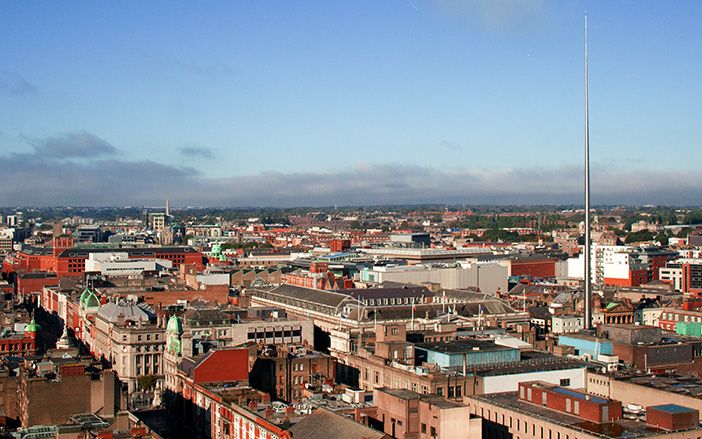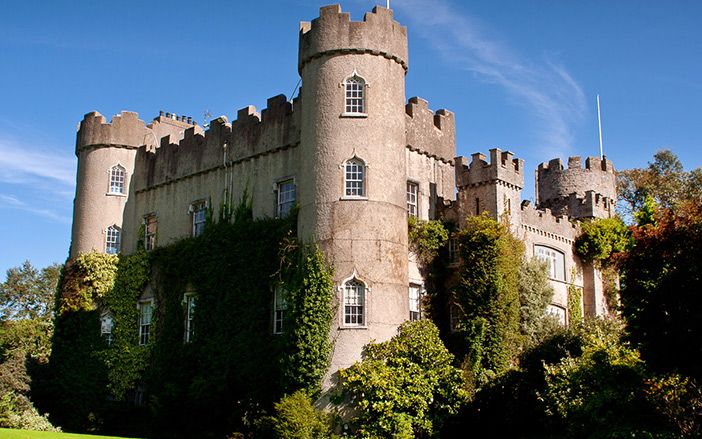Dublin
Dublin, the black pool of Europe
Its name comes from the words dubh (black) και linn (pool). It used to be the second largest city of the United Kingdom, but in 1922 it became the capital of independent Ireland. It’s a modern city with architectural influences from Britain, Holland and Georgia. The Liffey River runs through the city, and you can easily experience Dublin on foot. The port is close to the city centre and accessible by bus or train. Dublin is known for Guinness black beer, Jameson whiskey, writer James Joyce, and the music bands U2 and Cranberries. Book ferry tickets to Dublin through Let’s Ferry.
Attractions in Dublin
The busiest street of Dublin is O'Connell Street. Here you will see one of the tallest sculptures in the world, the Spire, which has a height of 120 m.
At the same street you can visit the General Post Office, one of the most recognisable landmarks of Dublin. The GPO Museum has many historical information about the 1916 Easter Rising.
The Ha’Penny Bridge at the Liffey River. It took its name from the half penny toll that people had to pay to cross it.
Learn about Dublin’s early days at the Dublin Castle, which was built in 1204.
Take an Oscar Wilde tour. Visit his family home and take a photo with the Oscar Wilde Memorial Sculpture in Merrion Square.
Discover some of the most unusual museums: the National Leprechaun Museum, the Irish Whiskey Museum and the Dublin Writers Museum.
Learn about the life and work of the most famous Irish writer at the James Joyce Centre.
Visit St. Patrick’s Cathedral and see the stunning architecture and its green gardens.
Take a tour at Ireland’s oldest college, the Trinity College and one of the most amazing libraries in the world, the Book of Kells.

The Spire of Dublin, one of the tallest sculptures in the world
Beaches in Dublin
The Dollymount Strand is on the Bull islet. It’s a 5 km long sandy beach and the closest to the city centre.
Burrow is 18 km from the port and is sandy. Every summer there is a lifeguard on duty.
Portmarnock is a long sandy beach with shallow waters. Walk, swim next to seals and dolphins and see a majestic sunset.
Activities in Dublin
Visit Phoenix Park, the biggest enclosed park in Europe. The Dublin Zoo is also there. Enjoy outdoor sport activities next to beautiful deer.
Enjoy a picnic at Stephens Green, a green park, just 4 km from the port. You will find a duck pond, a fountain and a playground.
Explore the Irish culture and traditions at the Dalkey Castle and Heritage Centre.
Book a tour at the medieval castle, see live performances and learn about the Irish literature and writers at the Writing Gallery.

The Malahide Castle & Gardens
Access to Dublin: You can reach the port by car, plane, bus, train, tram (LUAS) or ferry. Dublin’s airport is 8 km away.
Only in Dublin: Visit the Guinness Storehouse, a seven-floor building that has been a brewery founded by Arthur Guinness in 1759. At the end of your visit, you will find yourself with a pint of the most famous beer in Ireland, at the Gravity Bar. It’s one of the best bars in the world with a 360o city view. However, the most Irish thing you can do in Dublin is take part in the parade for St. Patrick’s Day. It takes place in Dublin every March and it’s a national holiday with more than 50.000 people participating.
Information about the port of Dublin
The port is connected to Holyhead in Wales.
Facilities at Dublin’s port: Free Wi-Fi, ATM, taxis, cafe, shuttered waiting lounge and WC.
Useful phones, Dublin:
Port: +353 1 887 6000
Hospital: +353 1 809 3000
Police: +353 1 675 9000